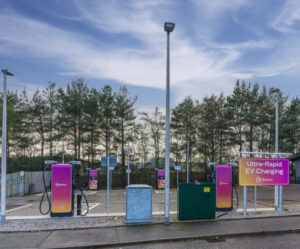Leaders and industry must do more to support research and development to ensure commercial viability of the fuel.
Global emissions could fall by up to one-fifth by 2050 if hydrogen’s potential is realised, but affordability, logistics and supply remain key obstacles to wider adoption.
Currently, almost 95% of the world’s hydrogen fuels are made using fossil fuels, including through steam-methane processes. However, so-called green hydrogen, which is created through electrolysis with renewable electricity as the input, is viewed by many as a potential silver bullet for various off-grid and transportation energy and fuel needs. Meanwhile, ‘turquoise hydrogen’, derived from wast plastic, offers even more opportunities to decarbonise while contributing to circular economics and a reduction in landfill, land and sea pollution.
‘Turquoise hydrogen offers a sustainable answer to the problem of ‘unrecyclable’ plastics that that are either too difficult or too expensive to recycle, or which struggle to find a clear secondary market where they’re sold for profit, recycled and re-introduced to the supply chain. The goal for turquoise hydrogen is to bring down its production costs so that it’s affordable,’ Chris Williams, founder and CEO of ISB Global.
‘Hydrogen has numerous advantages over other fuel sources. Fossil fuelssuch as gas, coal and oil emit large volumes of CO2, whereas hydrogen’s only byproduct is water. Hydrogen can also be stored and reused quickly, unlike batteries and other renewable energy sources,’ they continued. ‘However, maximising hydrogen’s considerable potential depends on having in place a clean and cost-effective production method. Research has identified methods that are being applied to produce hydrogen commercially, but their widespread use is still a long way off.’
A number of projects are already underway which could provide blueprints for turquoise hydrogen production. These include research by the Department of Materials Science and NanoEngineering at Rice University, Texas, which converts plastic waste streams into clean hydrogen and graphene. The process does not emit CO2.
More attention is needed, though, to stand a chance of a reduction in cost over the medium-long term. A study by Boston Consultancy Group has already concluded green hydrogen prices in Europe are unlikely to fall below €5 per kilogramme by 2030 based on the current landscape.
‘With the mass rollout of green hydrogen clearly many years away due to price constraints, it’s time to consider alternative solutions that can aid the net zero transition,’ Williams continued. ‘Solving how to produce turquoise hydrogen in a way that is cost-effective and scalable willput the fuel on a solid, sustainable footing and make it commercially viable as well.’
‘What’s critical is for government and industry to ensure adequate funding forthe companies and researchers working to establish turquoise hydrogen as a viable fuel source. A long-term solution will not only reduce consumption emissions but also drive the circular economy through the sustainable disposal of waste plastics,’ Williams added.
Image: Terry Vlisidis
More on energy:
Essex County Council celebrates net zero and sustainable development team
















